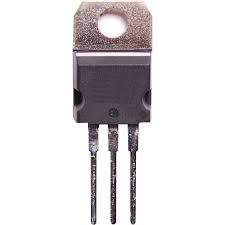STPS1545CT
Part Number: STPS1545CT
Manufacturer: STMicroelectronics
Description: DIODE ARRAY SCHOTTKY 45V TO220AB
Shipped from: Shenzhen/HK Warehouse
Stock Available: Check with us
ICRFQ.com - Electronic Components Distributor in China Since 2003

Part Number: STPS1545CT
Manufacturer: STMicroelectronics
Description: DIODE ARRAY SCHOTTKY 45V TO220AB
Shipped from: Shenzhen/HK Warehouse
Stock Available: Check with us
| Datasheet | |
|---|---|
| Category | Discrete Semiconductor Products |
| Family | Diodes – Rectifiers – Arrays |
| Manufacturer | STMicroelectronics |
| Series | – |
| Packaging | Tube |
| Diode Configuration | 1 Pair Common Cathode |
| Diode Type | Schottky |
| Voltage – DC Reverse (Vr) (Max) | 45V |
| Current – Average Rectified (Io) (per Diode) | 7.5A |
| Voltage – Forward (Vf) (Max) @ If | 570mV @ 7.5A |
| Speed | Fast Recovery =< 500ns, > 200mA (Io) |
| Reverse Recovery Time (trr) | – |
| Current – Reverse Leakage @ Vr | 100μA @ 45V |
| Mounting Type | Through Hole |
| Package / Case | TO-220-3 |
| Supplier Device Package | TO-220AB |
The STPS1545CT is a Schottky rectifier created for various electronic applications, such as high-frequency DC-to-DC converters and switch-mode power supplies. It is a fantastic choice for power management due to its quick switching speed, low voltage dips, and surge current capacity. This rectifier is placed in a TO-220AB or D2PAK package and has a dual common cathode arrangement. The tool has an avalanche capability that is specified and complies with the Restriction of Hazardous Substances directive of the European Union. Schottky rectifiers, such as the STPS1545CT, have a metal-semiconductor junction that permits current to pass through the component with little power loss. With a maximum continuous forward current of 7.5 A and a peak non-repetitive surge current of 150 A, it is a strong and trustworthy option for applications requiring quick, effective power control.
Switch mode power supplies and high-frequency DC-to-DC converters can benefit from using a dual center-tap Schottky rectifier. This device is designed for low-voltage, high-frequency inverters freewheeling, and polarity protection applications. It is available in TO-220AB and D2PAK packaging.
As a Schottky diode, the STPS1545CT is versatile enough to be utilized in various electronic contexts. Because it has a low switching delay, a high surge current capability, and a quick switching speed, it is ideally suited for applications requiring rapid and effective power supply management.
If you need to correct power in an electrical circuit, look for a Schottky rectifier. Since Walter H. Schottky was the one who came up with the idea for the device, he is the one who should receive credit for naming it.
In order to create a Schottky rectifier, a metal-semiconductor junction must be utilized. This junction requires a metal, such as platinum or titanium, to contact a semiconductor, such as silicon or germanium. Applications operating at high frequencies and speeds can benefit tremendously from the Schottky rectifier’s metal-semiconductor junction. This junction has a smaller voltage drop and a faster switching speed than a standard p-n junction diode.
To operate properly, it is necessary to apply a forward voltage across the Schottky rectifier. Once this voltage has been applied, current can flow through the metal-semiconductor junction. The metal side of the junction injects electrons into the semiconductor side of the junction, which causes the semiconductor side to have an excess of holes (or a deficiency of electrons), which are then filled by the electrons injected from the metal side. When this is done, the current is allowed to flow through the device, which enables it to perform the role of a rectifier.
In most circumstances, the forward voltage drop of a Schottky rectifier is somewhere in the range of 0.2 to 0.5 volts. Compared to p-n junction diodes, these devices can resist higher voltages and currents while producing less heat and losing less power.
The STPS1545CT rectifier from STMicroelectronics is a great solution for converting alternating (AC) to direct (DC) in a circuit. Its peak non-repetitive surge current of 150 A and maximum continuous forward current of 7.5 A make it a potent and dependable option, and the tube packing ensures that the parts arrive unharmed.
It is usable in various electrical layouts because of its twin common cathode arrangement and wide (-65 to 175) temperature operating range.
To purchase the STPS1545CT and other high-quality electronic components, contact ICRFQ, a trustworthy electronic component distributor in China. We offer a vast selection of components, including the STPS1545CT, at affordable prices. Contact us today to take your electronic designs to new heights.
WhatsApp us